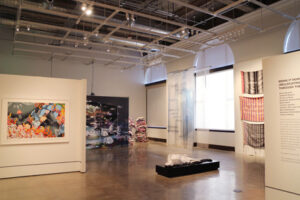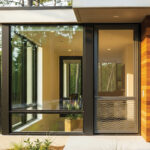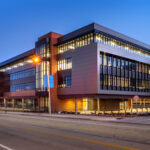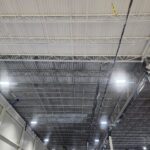Architecture is protected and supported by community members, especially those who dedicate a portion of their lives to ensuring the safety and well-being of their fellow citizens. This Veterans Day, Metal Architecture reflects on the importance of a safe and supportive community and recognizes the efforts of those who have empowered our country with strength both now and throughout history.
Military veterans respond to global crises such as war and critical weather events, using their skills, knowledge, and physical capabilities to contribute to a safer community for their fellow citizens. It is crucial to acknowledge the structures that commemorate the contributions of veterans and recognize both the societal shortcomings and progress towards improvement in creating infrastructure that supports those who have served and protected global communities.

Photo by San Francisco History Center, San Francisco Public Library/courtesy v2com
Bridging the gap: structures supporting soldiers

Photo by Hanna Kowal
Presently, the infrastructure supporting veterans’ social, physical, and economic needs after their term of service is complete is not widely accessible. Fortunately, organizations like the Military Warriors Support Foundation work to provide resources for veterans and bridge the gap of care. This foundation offers programs that support military veterans in growing to own homes, vehicles, prepare for careers, participate in supportive recreational activities, and foster financial wellness. At the 2025 METALCON, a steel-framed barndominium was the focal centerpiece of the show floor. This structure, Eagles Landing, will be a permanent veterans’ retreat in Montana.
This project is a large-scale steel framed structure with more than 725.7 kg (1,600 lbs) of framing and is what J.R. Mujagic, chief revenue officer of Scottsdale Construction Systems calls “the poster child for pre-fabrication.” Scottsdale Construction Systems partnered with METALCON, the Military Warriors Support Foundation, The Barndominium Company, The Expo Group, and Sheridan Metal Resources, and used donated materials from Steel Dynamics, Carlisle Architectural Metals, S-5!, Titanium, East Coast Metal Systems, and NovaGard to construct the structure.
This building exemplifies the ways in which metal can be used to create structures that effectively house supportive infrastructure for veterans. From the speed and quality of its construction on the show floor, an important fact remains clear: with enough support, more structural infrastructure for veterans is possible.
Memorializing veterans: a cultural imperative
Day-to-day, people in our societies are able to live safe and supported lives. It is critical to recognize the impact of veterans’ hard work and sacrifice, and the freedom that their work has unlocked for citizens to continuously improve their society from within.

Photo by San Francisco Public Works/ courtesy v2com
Structures across the country stand as a reminder to practice gratitude as they integrate intentional remembrance into the identity of the building.
On November 11th, 1932, the War Memorial Veterans Building in San Francisco, Calif., was formally dedicated to the troops. This landmark has been the site of critical gatherings, including the 1945 signing of the United Nations Charter. With additional renovations completed in 2015, this center is a community hub, which, importantly, offers the community the opportunity to reflect on why it was dedicated in the first place: to stand as a point of continuous remembrance.
This memorial has become a cultural center, offering a platform for the visual and performance arts. Veterans have selflessly faced impossibly difficult circumstances for the sake of their countries, and art acts as a medium in which to honor the service. The structure hosts the offices of the San Francisco Arts Commission, Grants for the Arts, a 408.8 m2 (4,400 sf) San Francisco Arts Commission gallery, and the San Francisco Opera’s performance space and facility. In making this memorial an artistic hub, the use of the landmark intrinsically combines art and veteran remembrance into the definition of the city’s culture.






